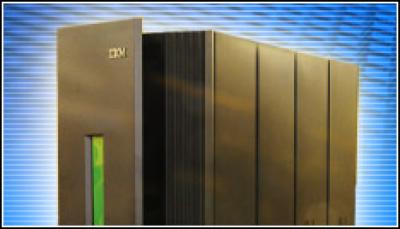

Supercomputers that use accelerators—including graphics chips—along with traditional CPUs are gaining a growing share of the list of the world’s most energy-efficient systems.
According to the Green500 list, released on 30 June by the same group that creates the Top500 list of the world’s fastest supercomputers, said the top eight supercomputers on the green list use accelerators of some kind. Accelerators are hardware designed to perform computations faster than a traditional CPU, or central processing unit.
The energy efficiency of a systems is defined as millions of floating-point operations per second divided by watts, or Mflops/W.
According to Wu Feng, associate professor of computer science and electrical and computer engineering at the College of Engineering at Virginia Tech, the presence of accelerators is making a significant difference in the energy efficiency of supercomputers.
“The accelerator-based supercomputers on the Green500 [are] more than three times more energy-efficient than their non-accelerated counterparts on the list,” Feng, who founded the Green500 list, said in a statement.
According to the group, the systems with the accelerators averaged 554 Mflops/W. Those without the accelerators averaged 181 Mflops/W.
The accelerators come in two forms, the group said, one type being GPUs from either Nvidia or Advanced Micro Devices, through its ATI business. Both companies have aggressively pushed GPUs for general-purpose computing workloads.
Nvidia officials have said the parallel processing capabilities of GPUs will be a key technology that enables systems to continue to ramp up performance. In a Forbes.com column in April, Bill Dally, chief scientist and vice president of Nvidia, argued that traditional CPUs from Intel and AMD demand too much energy, and that for Moore’s Law to continue companies need to adopt the parallel processing capabilities of GPUs.
Systems vendors, such as SGI, are beginning to bring GPUs into their HPC (high-performance computing) servers.
Two of the top 10 on the Green500 list are supercomputers from China—the Dawning TC3600 and Mole-8.5—that use Nvidia graphics chips with traditional Xeon processors from Intel. A third supercomputer from China, Tianhe-1, a supercomputer that uses ATI Radeon HD 4870 GPUs from AMD, debuted on the list in November 2009 at No. 8, but has fallen to No.11 in the current list.
The second type of accelerator showing up on the Green500 list is the customer PowerXCell 8i chip from IBM. Systems using the PowerXCell 8i took the top three spots on the current Green500 list. Those three QPace systems are housed in Germany.
The PowerXCell 8i is an enhanced version of the Cell Broadband Engine that IBM originally developed with Sony and Toshiba.
Denial from TSMC, after multiple reports it was in talks with Intel over a joint…
CEO Tim Cook talks to Trump official, as IDC notes China's smartphone market growth, and…
Another big name chip maker expects a hefty financial charge, after the US tightened rules…
More bad news for Google. Second time in less than a year that some part…
Federal office that tackled misinformation and disinformation from hostile nations is closed down, after criticism…
After Nvidia admits it will take $5.5 billion charge as Trump export limits of slower…
View Comments
what will we do with all the milliseconds saved....sleep?